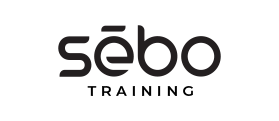Last Updated on November 14, 2024
This training will go over how to log into Meta Business Suite, how to navigate the platform, and some other high-level things.
Before you jump in, it’s worth noting that Meta Business Suite is “above” Meta Ads Manager. Meaning, it is where all things Facebook business are managed (not just ads). Since we’re going to be focusing exclusively on ads, we’re not yet sure how much time we will even spend in Business Suite. So, this training will be very surface-level. Mostly just providing brief descriptions of what each of the tools are.
If you’re just wanting to learn about Ads Manager, click here.

Let’s start by navigating to business.facebook.com
- Click “Log in with Facebook”
- Select “agency@sebomarketing.com”
As far as we can tell, the whole company just using the “agency” user should be fine. We don’t necessarily want to link our personal Facebook accounts, but we may have to if we run into problems with that many people using the same user.
Navigating Meta Business Suite
Once logged in, you will see a large toolbar on the left-hand side of the screen:
- Home
- Notifications
- Ads Manager
- Inbox
- Content
- Planner
- Ads
- Insights
In this training, we’ll go over what each of these tabs does. Our main focus, of course, will be Ads Manager, but that will be more fully explored in a separate training.

Notifications
This section contains exactly what you would expect it to — notifications of people who followed your Facebook page, people who commented on posts, or people sharing things with your Facebook account. We are not yet sure how much we’re going to be involved with things like replying to comments (or similar), so we’re not sure yet how useful this section is going to be to us.

Ads Manager
Click here for a full training on navigating Ads Manager.
Inbox
The inbox section is a convenient, all-in-one messaging hub. It lets you reply to your messages from:
- Facebook Messenger
- Facebook comments
- Instagram Comments
Again, we’re not sure yet how much replying to comments we’re going to be doing, but this is definitely the place to do it.
Inbox also lets you set up automations (instant replies based on keywords, away messages, etc.), and even create messaging ads** straight from your inbox.
**Messaging ads are basically sponsored posts that are meant to result in people sending you a message

Content
The Content section has a lot of subsections of its own. As the name implies, it’s a hub where you can find all of your content (reels, stories, posts, clips, etc.). You can also schedule and publish posts. This section mostly deals with organic posts, so we most likely won’t use it very much, but it could be useful in certain situations.
One cool thing is that you can check all of your Mentions & Tags, which is a useful way of seeing who’s talking about you.

Planner
The Planner section is cool but, again, is mostly for organic posting. It is essentially a calendar that lets you plan out, schedule, and manage your content.
One feature that we may use — If you create a new automatic post, you can make it a “boosted” post. We’re not quite sure how often we will be boosting posts (probably not very often), but if we ever need to this is one way to do it.

Ads
This may be a section we visit more than the others. The “Ads” section of MBS is kind of like the “overview” page in Google Ads. It provides a high-level view of spend, engagement, and results. It also gives other info, like recommendations, a quick-view of your latest drafts, and some audience insights. Lastly, there is a section that lets you view all of your active ads.

Insights
Insights has plenty of interesting information and insights. This is a section that we may use more than others. Not because it seems necessary for running successful ad campaigns, but because it is a good way to understand the holistic performance of a client’s Facebook page. There are several sections within Insights:
- Overview – High-level performance snapshot. How many new followers, link clicks, interactions, messages, results, etc. did we achieve? Also provides recommendations and similar
- Plan – Provides small goals or steps that are there to keep your account on track. Sort of feels like Google Ads Recommendations, but a little different. Examples: “Publish one ad this week”, “Maintain a response rate of 1%”, “Publish on story on Instagram”, etc.
- Results – Will give you graphs that tell you your reach, visits, follows, paid reach, and paid impressions for a given channel (Facebook, Instagram, WhatsApp, etc.)
- Audience – Gives you a breakdown of Audience Trends, Audience Demographics, and Potential Audiences
- Leads – A breakdown of leads and other conversion data. Can be filtered down to just “Paid” if you want
- Messaging – See everyone who has contacted your business, how many orders/leads resulted from conversations, and how quickly you respond to messages with the daily responsiveness tracker
- Benchmarking – Compare your page to other pages: compare follower counts, how often you post, etc. In the “Business to watch” section, you can add a specific competitor business to track

